Personal Protective Equipment
OSHA requires all employers, regardless of size of facility, to conduct a formal written workplace hazard assessment to determine the type of personal protective equipment required to protect employees from injuries. Employers are required to provide
the personal protective equipment and provide employee training on its proper use. Failure to conduct the assessment is a commonly overlooked 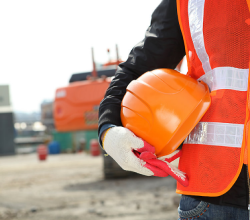 requirement.
requirement.
Common hazards found in printing operations include:
- Sharp objects which might pierce the feet or cut hands
- Falls from heights greater than 4 feet
- Rolling or pinching objects which could crush hands or feet
- Electrical hazards
- Dust, particulates, flying objects, the potential for objects to strike the worker
- Hazardous radiation (welding, brazing, cutting, UV, and other high-intensity lights, etc.)
- Falling objects or potential for dropping objects
- Potential sources of impact or motion, such as machinery or processes where any movement of tools, machine elements, or particles could exist
- High temperatures that could result in burns, eye injury, or ignition of protective equipment, etc.
- Chemical exposures
- Hazardous atmospheres
- High noise levels
Recommended Templates
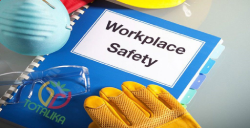 Written Hazard Assessment. The purpose of the PPE hazard assessment form is to determine the hazards present for a single position. Therefore, an assessment must be created for each position, not individual employees, in the workplace. It must be written and certified to ensure you’ve performed an adequate evaluation, comprehensively identify all hazards or potential hazards, state name of the person certifying the evaluation and list the date(s) of the hazard assessment. PRINTING United
Alliance has a Written Hazard Assessment Template that you can use to perform the assessment.
Written Hazard Assessment. The purpose of the PPE hazard assessment form is to determine the hazards present for a single position. Therefore, an assessment must be created for each position, not individual employees, in the workplace. It must be written and certified to ensure you’ve performed an adequate evaluation, comprehensively identify all hazards or potential hazards, state name of the person certifying the evaluation and list the date(s) of the hazard assessment. PRINTING United
Alliance has a Written Hazard Assessment Template that you can use to perform the assessment.
Safe Dress Code Policy Template. This form covers general items such as dress, long hair and jewelry that are not covered in the Hazard Assessment Template.
Training
It is required to train workers who are required to wear any required personal protective equipment on how to do the following:
- Use protective equipment properly
- Be aware of when personal protective equipment is necessary
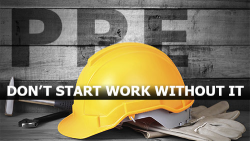
- Know what kind of protective equipment is necessary
- Understand the limitations of personal protective equipment in protecting workers from injury
- Put on, adjust, wear, and take off personal protective equipment
- Maintain protective equipment properly
- Employers should also ensure workers are taught to inspect PPE prior to wearing and to report damaged safety equipment. Every employee should be aware of how to obtain replacement PPE through training. And under no circumstance should an employee ever wear defective PPE.
PPE for Printing Operations
The printing industry is most likely to need PPE to prevent cuts and lacerations, injuries from chemicals, and foot protection from moving heavy objects. The purpose of the guidance below is to outline the steps toward identifying and understanding common hazards, PPE selection, and the management of those hazards in the workplace through training. Remember, use your workplace hazard assessment template to identify and document the PPE chosen for a specific job function.
PPE for Cut and Laceration Prevention
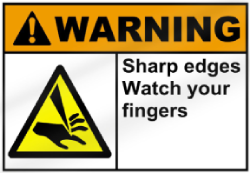
In our industry we use sharp tools and components which include X-acto blades, razor blades, cutter knives, box cutters, utility knives, and sewing needles. These are used to cut and trim substrates, scrape material, open boxes, and with sewing needles, embroider images. Using these sharp tools can lead to a potential hazard if not used and handled properly. Misuse can lead to abrasions, cuts, punctures, and amputations.
In order to control and prevent such hazards and injuries you need to establish a safety program which can address any existing and potential sharp hazards and select the proper PPE. To help you with sharps management and PPE selection, SGIA has developed its Sharps Guide. The Sharps guide focuses on common hand protection when working with sharp tools and components typically found in our industry and should be incorporated into your overall safety program.
- Sharps Safety Brochure: provides an overview of sharps in the workplace, including a hazard assessment guide.
- Sharps Safety Poster: quick reminder of safe operations and you should place this poster at or near the areas where sharps are used in your facility.
PPE for Hands, Face, and Eye Protection
When working with chemicals, around machinery of any kind especially grinders or cutters, or routers, moving heavy objects with pallet jacks or forklifts, or with sharp tools, there is always a risk of splashing chemicals, flying debris or dropping heavy or a sharp object. Again, your workplace hazard assessment should identify the proper PPE for these positions. To protect employees from these hazards, OSHA recommends the following:
PPE for Hearing Conservation
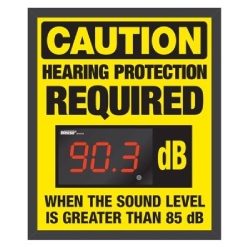 Exposure to high noise levels can cause irreversible hearing loss or impairment as well as physical and psychological stress. Wearing earplugs or earmuffs can help prevent damage to hearing. Earplugs made from foam, waxed cotton, or fiberglass wool
are self-forming and usually fit well. It is good practice to clean earplugs regularly and replace those you cannot clean.
Exposure to high noise levels can cause irreversible hearing loss or impairment as well as physical and psychological stress. Wearing earplugs or earmuffs can help prevent damage to hearing. Earplugs made from foam, waxed cotton, or fiberglass wool
are self-forming and usually fit well. It is good practice to clean earplugs regularly and replace those you cannot clean.
- Hearing Conservation Program: used to identify areas of high noise levels, take measures to reduce the noise, and to prevent hearing loss due to noise exposure. This program is mandatory for facilities in areas of operation that equal or exceed an 85dBA time weighted average for 8 hours.
- NIOSH Sound Level Meter App: combines the best features of professional sound levels meters and noise dosimeters into a simple, easy-to-use package.
PPE for Respiratory Protection
When engineering controls are not feasible, workers may use appropriate respirators to protect against adverse health effects caused by breathing air contaminated with harmful dusts, fogs, fumes, mists, gases, smokes, sprays, or vapors. Employees are not required to wear respirators.
Before assigning a respirator, it is recommended that facilities conduct indoor air quality monitoring to determine if a respirator is needed. Many chemicals used by our industry emit odors well below the occupational exposure thresholds.
Likewise, dusts generated from cutting operations such as router tables or paper handing such as paper dust, and spray powder are 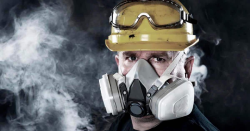 also usually below the thresholds where respirators are required.
also usually below the thresholds where respirators are required.
Respirators generally cover the nose and mouth or the entire face or head and help prevent illness and injury. A proper fit is essential, however, for respirators to be effective. Required respirators must be NIOSH-approved and medical evaluation and training must be provided before use.
In some instances, employees may want to wear a dust mask when performing certain tasks. While dust masks are respirators and covered under OSHA’s regulations, they are not subject to all the requirements as other respirators are. When an employee wants to use a dust mask, they are required to be provided a copy of Appendix D of the standard.
- Acknowledgement Form of the Respiratory Standard: OSHA requires the information in this form to be supplied to employees who wish to use respiratory protection devices voluntarily. All employees who want to wear a dust mask must sign this agreement form.
PRINTING United Alliance’s OSHA Compliance Resource Center provides technical assistance and services designed to allow printing operations to manage compliance and stay informed. For more information on Personal Protective Equipment or PRINTING United Alliance’s EHS services, email govtaffairs@printing.org or call 888-385-3588.